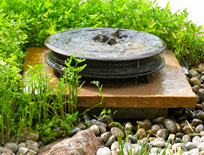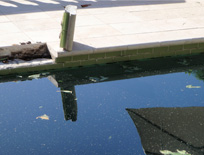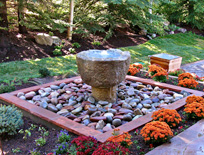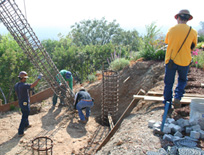ARTICLES
Advance Search
Aquatic Health
Aquatic Health, Fitness & Safety
Around the Internet
Aquatic Culture
Aquatic Technology
Artful Endeavors
Celebrity Corner
Life Aquatic
Must-See Watershapes
People with Cameras
Watershapes in the Headlines
Art/Architectural History
Book & Media Reviews
Commentaries, Interviews & Profiles
Concrete Science
Environment
Fountains
Geotechnical
Join the Dialogue
Landscape, Plants, Hardscape & Decks
Lighter Side
Ripples
Test Your Knowledge
The Aquatic Quiz
Other Waterfeatures (from birdbaths to lakes)
Outdoor Living, Fire Features, Amenities & Lighting
Plants
Ponds, Streams & Waterfalls
Pools & Spas
Professional Watershaping
Structures (Editor's Notes)
Travelogues & History
Water Chemistry
WaterShapes TV
WaterShapes World Blog
Web Links
Around the Internet
Aquatic Culture
Aquatic Technology
Artful Endeavors
Celebrity Corner
Life Aquatic
Must-See Watershapes
People with Cameras
Watershapes in the Headlines
The warmth and solid heft of aged, cast brass are the hallmarks of the antique rice cooker — a treasure acquired in India several years ago — that now makes a statement to visitors approaching a modern Colorado home's front door. Forged more than 150 years ago using the same techniques employed in making
Although many people steadfastly defend their efforts at becoming a project's low bidder by saying, "There's just no other way to bring in the business," the sad fact is that this practice is a cancer — one that degrades the product, leaves the clients unhappy and diminishes
It might sound a bit strange to put it this way, but when it comes to design work, one of the most useful things you can do is to think about how you think about design. If you're like me and have been working as a watershape designer for more years than you care to count, much of what you do is now
It's human nature: We often neglect the quality and profound importance of that which fulfills our most basic needs. At a minimum, we expect breathable (if not clean) air, abundant food, warm beds, companionship, clothing and, especially, clean water. We take these and other "commodities" for granted because they come in abundant supply — so when issues arise, they tend to
"A smart man learns from his own mistakes, a wise man learns from the mistakes of others." If you follow that Latin proverb, then you might conclude that the watershaping industry is populated by a fair number of smart people and a few wise ones. There are others out there, however, who
Through the years, my experience in designing and building naturalistic and architectural watershapes has led me into several situations in which my clients have wanted to use a special heirloom or artifact of some kind as
An Interview by Lenny Giteck Jon Mitovich is president and general manager of Roman Fountains, a designer and manufacturer of fountain-system packages and components based in Albuquerque, N.M. Mitovich has conducted classes and seminars on the fountain business and fountain design to help watershapers understand the origin, history and application of water in architectural environments. He also has
Through the past several years, I've witnessed a debate among people in the watershaping industry about whether every construction project should require soils and geology reports as part of every design and engineering process. Most of my colleagues who work in the custom, quality-oriented end of the business will
If you want to gain a full appreciation for classic fountains, pools or waterfeatures, you really do need to pack your bags: Seeing their beauty, power and subtlety at first hand gives us the opportunity to






















The View from the Editor’s Desk